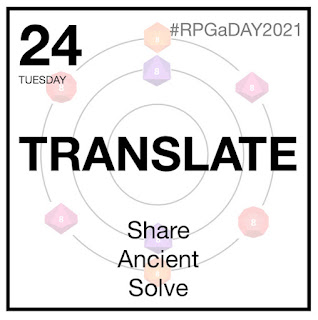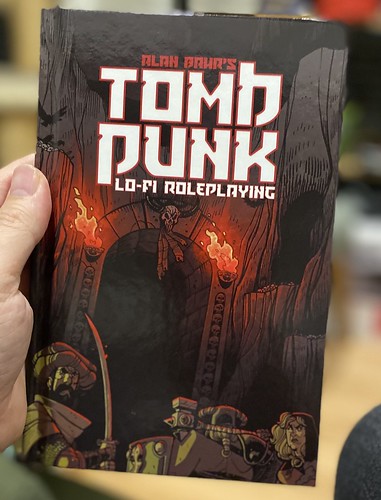 |
| I wonder how I’ll translate this into an entry? |
There are plenty of decent options for translated games (I’d go with much of the Fria Ligan material that started in Swedish and the Space 1889 reboot with Ubiquity that was originally German) but rather than go there, I’d rather talk a little about translations between game editions.
The D&D OSR has become a lingua-franca between editions; by using the core elements of the game engine which haven’t really changed (AC, HD, HP, Spell names etc) it’s possible to quickly jump between versions. Of course, this has been there from the start. We played a melange of Holmes Basic, B/X and AD&D 1e (and later 2e) with minimal effort on the part of the DM. D&D 5e can draw on the same source but needs a little more work (but I’m not sure about 3/3.5e and 4e). It’s good because you can skim through an adventure and easily get a feel for how it will work out.
Chaosium BRP based d100 games were similar; I’ve used Call of Cthulhu Dreamlands material in Stormbringer/Elric! without bothering with any conversion except in my head. I suspect that you could also easily cut across into Mythras or OpenQuest as well.
BITS did this for Traveller, with the BITS task system. We equated the difficulty levels in task rolls across multiple editions (including T20 and GURPS Traveller), which allowed us to create scenarios with could be used across the different takes on the game. We did remain resolutely with the UPP statistics and skills for characters, as they’re close enough to compare across editions. Of course, Traveller is two things; a sprawling space opera setting with a hard SF veneer and also a 2D6 based game engine which has influenced other designed. With one simple table, we allowed quicker translation between game engines.
The longevity of the hobby means that backward compatibility is important, and translation tools help that, no matter how crude they are.
24 August 2021






























